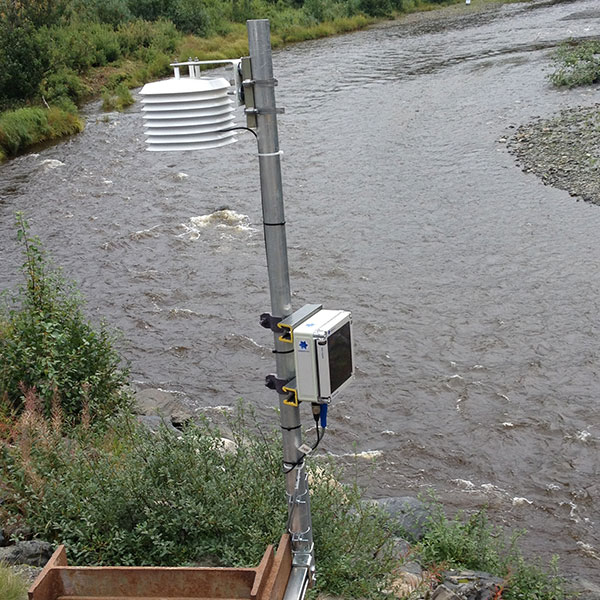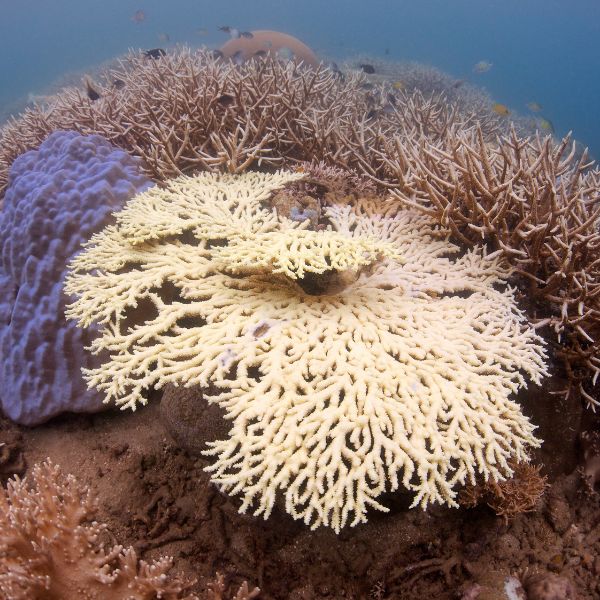Climate change is reshaping ecosystems globally, with aquatic environments among the most vulnerable. As researchers, scientists, and policymakers focus on mitigating these effects, understanding how temperature fluctuations, ocean acidification, and habitat alterations impact aquatic life is paramount. This article delves into these challenges, offering a comprehensive overview while highlighting the importance of real-time environmental monitoring solutions.
Temperature Changes: The Ripple Effect on Aquatic Species
One of the most immediate and observable impacts of climate change is the alteration of water temperature. Aquatic species are highly sensitive to temperature changes, which influence their distribution, migration patterns, and even their breeding cycles.
Species Distribution and Migration
As water temperatures rise, species are forced to migrate to cooler regions, leading to overcrowding in certain habitats and disrupting existing ecosystems. For example, fish species that once thrived in temperate waters may now be found in cooler, deeper waters. A recent study on European sprat in the Adriatic Sea found that rising sea temperatures could shift their habitat significantly, with models predicting a notable reduction in suitable habitats by 2050 (Palermino et al., 2024). This migration not only affects the species themselves but also the predators and prey within these ecosystems, leading to a cascade of ecological impacts.

Breeding Cycles and Spawning Periods
Temperature fluctuations significantly influence the timing of breeding cycles and spawning periods in aquatic species. Many species depend on specific temperature ranges for successful reproduction. When these temperatures shift, it can disrupt the synchronization between offspring birth and the availability of food resources, leading to increased mortality. For example, research on the common dolphinfish in the Mediterranean Sea shows that warming waters are altering spawning times, causing larvae to hatch when their critical food sources are scarce, thereby raising mortality rates (Moltó Seguí, 2023). These findings underscore the broader ecological risks posed by climate change, as even slight temperature changes can have cascading effects on marine life and ecosystems.
Case Study: The Impact on Salmon Populations
Salmon are a prime example of a species affected by rising temperatures. In Alaska, the Cook Inletkeeper’s Stream Temperature Monitoring Network has been assessing the health of salmon streams since 2007. Between 2013 and 2017, four beadedstream river monitoring stations were installed to collect temperature data, revealing significant variations in stream temperatures that have influenced salmon spawning and survival rates. This monitoring network, expanded by the U.S. Fish & Wildlife Service in recent years, underscores the critical role of continuous temperature monitoring in understanding and mitigating the impacts of climate change on aquatic life.

Ocean Acidification: A Threat to Marine Biodiversity
As atmospheric carbon dioxide levels rise, a significant portion is absorbed by the world’s oceans, leading to ocean acidification. This process reduces the pH of seawater, making it more acidic, which disrupts the ability of calcifying organisms like shellfish and coral reefs to build and maintain their shells and skeletons. This has far-reaching consequences for marine life, particularly for these vulnerable species (Vivian, Böttcher, & Boyd, 2024).
Impact on Shellfish and Coral Reefs
Shellfish, including oysters, clams, and mussels, rely on calcium carbonate to build their shells. Ocean acidification reduces the availability of carbonate ions, making it more difficult for these organisms to maintain and grow their shells. This vulnerability not only threatens shellfish populations but also the industries and communities that rely on them.
Coral reefs, often referred to as the “rainforests of the sea,” are similarly at risk. The reduced availability of carbonate ions hampers the ability of corals to build their skeletons, leading to weakened reef structures. This weakening makes reefs more susceptible to other stressors, such as bleaching events and physical damage, ultimately threatening the biodiversity that depends on these habitats (Hall-Spencer & Harvey, 2019).

Long-Term Effects on Marine Food Webs
The decline of shellfish and coral reefs has cascading effects on marine food webs. As foundational species struggle to survive, the species that rely on them for food and habitat are also impacted. This can lead to reduced biodiversity and altered ecosystem dynamics, potentially collapsing food webs that have existed for millennia (U.S. Environmental Protection Agency [EPA], 2017).
Changes in Water Quality: Algal Blooms and Hypoxia
Climate change is also driving changes in water quality, with significant implications for aquatic ecosystems. Two of the most concerning trends are the increased frequency of algal blooms and the reduction in oxygen levels in bodies of water.
Algal Blooms and Their Impact
Warmer temperatures and increased nutrient runoff from agriculture and urban areas are contributing to more frequent and severe algal blooms. These blooms can produce toxins that are harmful to aquatic life and humans, leading to fish kills, shellfish poisoning, and degraded water quality. The proliferation of algae also blocks sunlight from reaching underwater plants, disrupting the entire aquatic ecosystem (U.S. Environmental Protection Agency, n.d.).

Hypoxia: The Silent Killer
As algal blooms die off, the decomposition process consumes oxygen, leading to hypoxic conditions, or “dead zones,” where oxygen levels are too low to support most marine life. These dead zones are expanding in oceans and lakes worldwide, leading to the displacement or death of fish and invertebrates. The Gulf of Mexico, for instance, has one of the largest dead zones globally, largely driven by nutrient pollution exacerbated by climate change (National Oceanic and Atmospheric Administration, 2023).
Habitat Loss and Alteration: Erosion and Changing Precipitation Patterns
Climate change is also altering physical habitats in both marine and freshwater environments, with profound effects on the species that rely on these ecosystems.
Coastal Erosion and Marine Habitats
Rising sea levels and increased storm intensity are accelerating coastal erosion, leading to the loss of critical habitats such as mangroves, seagrasses, and salt marshes (Li et al., 2018). These habitats provide essential services, including nursery grounds for fish, protection from storm surges, and carbon sequestration. As these habitats shrink or disappear, the species that depend on them face an uncertain future.
Freshwater Habitats: Precipitation and Water Flow
In freshwater systems, altered precipitation patterns and changes in water flow are reshaping habitats. Increased rainfall often leads to flooding, which can cause habitat destruction through processes such as habitat scouring, where the physical structure of the habitat is altered by strong water currents. On the other hand, prolonged droughts reduce water availability, concentrating pollutants and further stressing aquatic life. These conditions were observed in the Kruger National Park, where changes from drought to flood conditions significantly impacted water quality and the composition of biotopes, leading to shifts in aquatic species distributions (Koen, 2023). Additionally, changes in water flow affect sediment transport, altering the physical characteristics of rivers and streams and impacting species adapted to specific flow conditions.
Conclusion: The Role of Monitoring in Mitigating Climate Change Impacts
As the impacts of climate change on aquatic life become increasingly evident, the need for robust environmental monitoring solutions grows. Real-time data on temperature, water quality, and habitat changes is essential for researchers, scientists, and governments to develop effective strategies to protect aquatic ecosystems.
The cumulative impacts of climate change on aquatic ecosystems are undeniable, posing significant threats to biodiversity, food security, and coastal economies. To effectively address these challenges, robust environmental monitoring is essential. Real-time data on temperature, water quality, and habitat conditions provides critical insights to inform evidence-based decision-making.
beadedstream’s advanced temperature monitoring solutions, including digital temperature cables satellite-based data loggers, and cloud-based monitoring software, offer valuable tools for scientists, policymakers, and stakeholders to understand and respond to these pressing issues. By investing in cutting-edge technology and implementing comprehensive conservation strategies, we can mitigate the impacts of climate change and protect our vital aquatic ecosystems. Urgent action is required to safeguard the health and resilience of our planet’s water resources for future generations.








